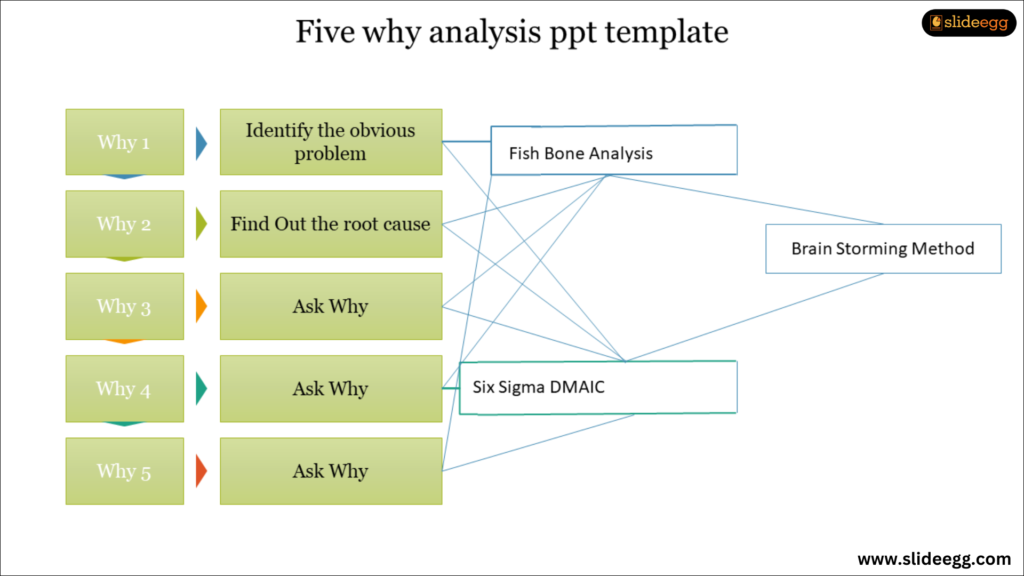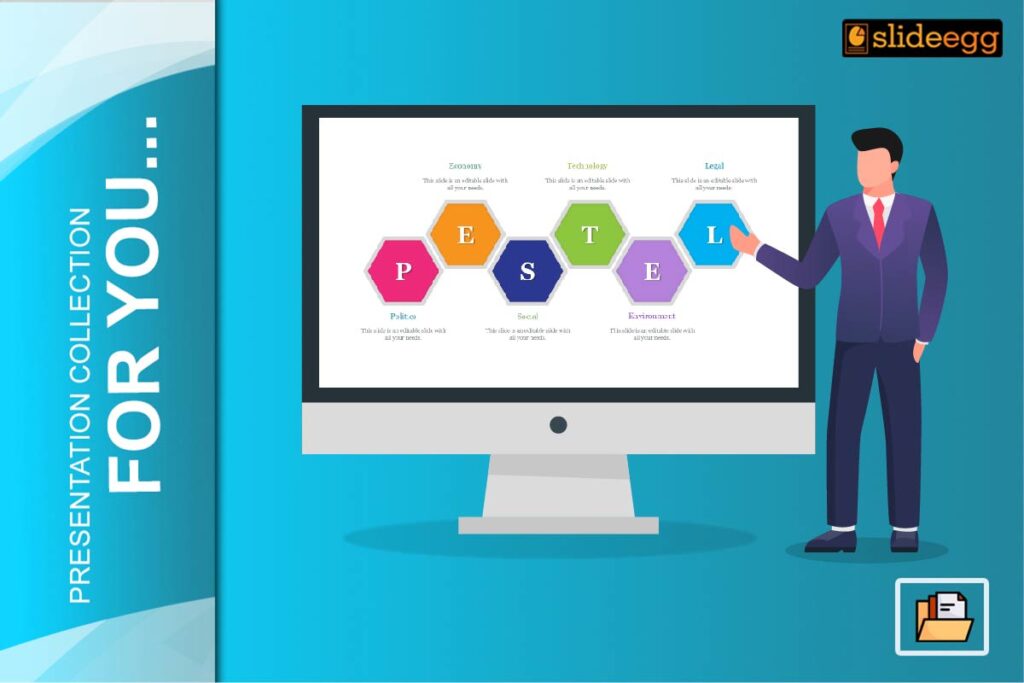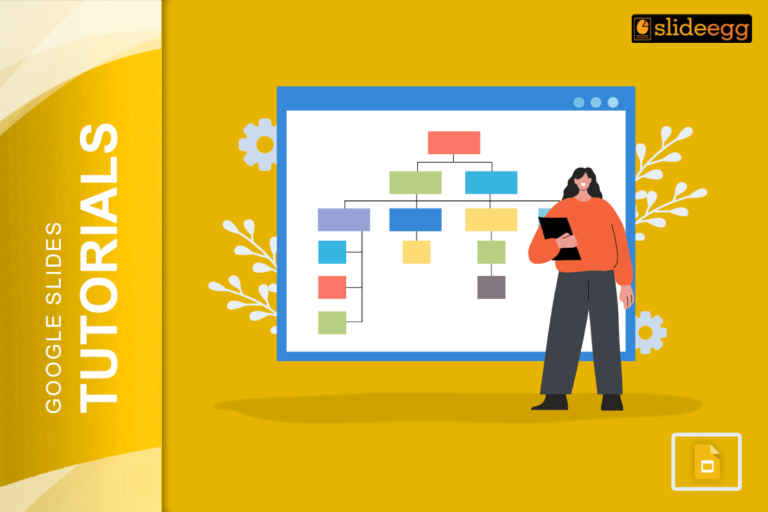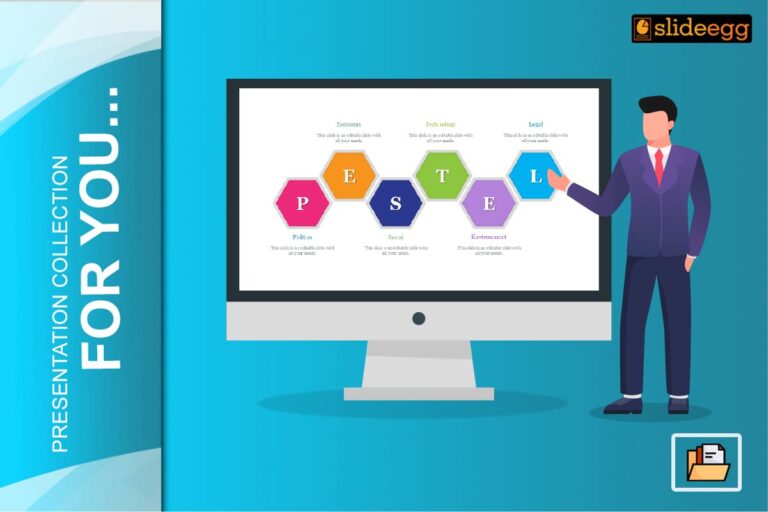Solving problems is an unavoidable part of any business or project, but choosing the right method to find the root cause can make all the difference between a temporary fix and a lasting solution.
One of these sets of skills required in the competitive world, that every business and individual needs today is solving problems. Although there are lots of methodologies to deal with problems effectively, the 5 Whys analysis template PPT happens to be one of the methodologies that are simple and effective in discovering root causes.
But how does it compare with other problem-solving methods like Fishbone Diagrams, Six Sigma, or even Brainstorming? Keep reading this blog post to find out just how different such problem-solving methods are, thereby assisting you in the next decision.
What is the 5 Whys Technique?
The 5 Whys technique is a very simple technique where the respondent is asked, “Why?” five times to understand and get to the root cause of a problem.
How does it work?
- Identify the Problem
- Ask “Why” the problem occurred
- Repeat “Why” for every response usually five times digging deeper for its root cause.
Let’s consider an example. Say a machine has broken down. You can ask your team:
1)Why did it stop?
2)Why wasn’t it fixed?
3)Why wasn’t the spare part available?
4)Why wasn’t the inventory verified?By the fifth “Why,” you typically get to the root problem, which is poor maintenance or terrible management of the inventory.
How Can 5 Whys Compared to Other Methods

5 Whys vs. Fishbone Diagram
Another tool for conducting root cause analysis is the Fishbone Diagram which categorizes different possible causes of a problem into people, machines, materials, and processes.
Graphic Presentation: In the Fishbone Diagram you will have a graphic layout that will help you see all possible causes in one glance. Compared to this, 5 Whys lacks any visual element, thus easier but less comprehensive, especially for bigger or more complicated problems.
Ease of Use: The 5 Whys method is quicker and less complicated to implement than the Fishbone Diagram, but the latter is more comprehensive and structured, so it could better be used for complex problems with some factors.
When to Use Fishbone Diagram: For problems having several dimensions and asking for a wider perspective, the fishbone diagram template PPT could prove to be the preferred choice. For petty issues that are very simple, 5 Whys often suffice.
5 Whys vs. Six Sigma DMAIC
Six Sigma is more analytic and data-centric with the aim of process enhancement. Amongst its mainstream methodologies lies DMAIC (Define, Measure, Analyze, Improve, Control).
Complexity vs. Depth: Six Sigma requires data gathering, statistical analysis, and measuring performance. 5 Whys are quite simple with no requirement of data gathering or statistical analysis, and thus, much more accessible to quick fixes in problem situations.
Time and Resources: While Six Sigma may take weeks or months to implement, 5 Whys can be conducted in one sitting, so it’s excellent for such immediate answers. Six Sigma will however likely bring more durable, long-term solutions because of the process-of-detail orientation.
When to Implement Six Sigma: If you are in a high-risk environment where decisions should be based on data, Six Sigma can be implemented.
5 Whys vs. Brainstorming
Brainstorming is a creative teamwork activity with multiple ideas to solve a problem without judgment. This is widely used in teams for solution generation.
Creativity vs. Structure: Brainstorming fosters out-of-the-box thinking, but Five Whys follows a more structured and logic-driven line to find what the actual cause is; in cases where brainstorming is ideal for eliciting a wide range of ideas but does not enable drilling down into actual causes.
Collaboration: Brainstorming relies on group input and diversity of thought, whereas five Whys can be done by one individual or a smaller group.
When to Use Brainstorming: Apply brainstorming PPT to explore a wide variety of possible solutions. Apply 5 Whys when you are more focused on diagnosing a specific problem.
Strengths and Weaknesses of 5 Whys
-Strengths:
Simple and Quick: Anyone may apply it, and it requires no special tools.
Helps Focus on Root Cause: Helps in pinpointing the actual issue rather than merely a treatment for symptoms.
Very Efficient Cost-Effective: In that, it does not require a great deal of resources and tools; it is very efficient.
-Weaknesses:
Too Simple for Some Complex Problems: The five iterations of “Why” are not always sufficient to delve into the root causes, especially when dealing with complex systems.
Subjective: The method depends on the knowledge and understanding of the person answering the 5 Whys.
Choosing the Right Problem-Solving Method
The decision lies in the problems when identifying between the 5 Whys and other methods with such considerations
The complexity of the Problem: If it contains various causes or is so complex, then tools like the Fishbone Diagram, Six Sigma, etc. would suffice.
Available Resources: Where resources are limited and a quick solution is required, 5 Whys would be the best.
Need for Innovation: When ideas are needed rather than the root cause then Brainstorming would be more suited to this.
Conclusion
With the 5 Whys method, you can identify root causes quickly, especially in terms of saving time and resources. However, this tool may not be ideal for all situations when the problem is complex and requires much more data-driven approaches. The difference between 5 Whys, Fishbone Diagrams, Six Sigma, and Brainstorming will assist you in deciding which tool is needed for your project to ensure you tackle problems right the first time.







